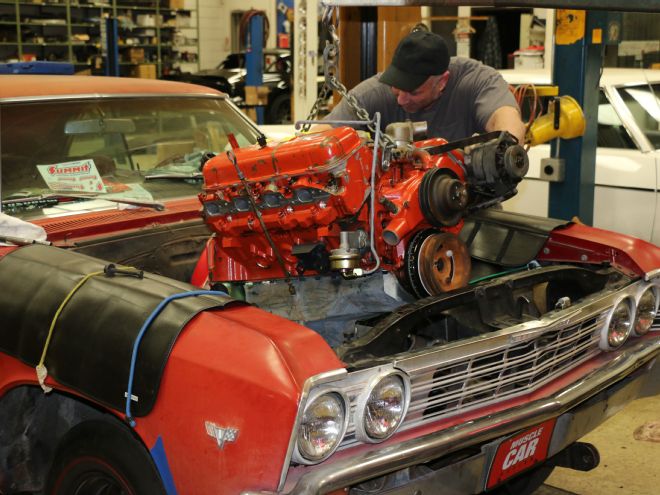
Vintage guitars can bring big money. I have owned an acoustic Taylor 510 for more than 20 years, and the guitar is worth more today than when I purchased it. A 1958 Gibson Les Paul Standard in its original finish can bring more than $200,000 in today's market. A well-worn acoustic or electric guitar will pique the interest of the typical guitar aficionado because years of service would indicate quality and great performance, with a likelihood of strong value. Like the original paint on a muscle car, typical wear on a desirable guitar with nice original finish will usually not hurt its value.
In the guitar world, it is not surprising that the process of "relicking" has been born. When a guitarist says he wants to relic his new electric or acoustic guitar, he is speaking of making it look like a worn, 40-year-old veteran. We decided to relic a Chevrolet Performance ZZ427/480 crate motor so it would look at home in the dirty (but original) engine compartment of our MaliBeater 1967 Malibu project car. However, the relic job on our motor would include a transformation from 2015 ZZ427/480 to the appearance of a 1967 L88 427/430 motor. My buddy Mike Ardito performed the work on the motor.
Ardito currently works for Mecum Auctions as chief supervisor of mechanical and restoration operations. His talent includes a career of top-shelf muscle car and Corvette restorations. He has served as judge for the Zenith Survivor shows and for the Preservation Class at the Muscle Car and Corvette Nationals (MCACN).
Unlike anyone I know, Ardito can discern the originality and work performed on a collector car by just examining it. He is also a genius at reproducing original paint or component finishes for the purpose of having them look right with the rest of the car. When Ardito volunteered his services to transform and relic the 427 motor that would be installed in the MaliBeater, I was elated, to put it mildly.
Understand that the MaliBeater is, in part, an exercise in preserving a car's originality. On that note, Ardito was recently called on to repair front fenderwells that had been butchered to fit a pair of headers. Because the car was a very nice, original-paint automobile, the owner was deeply committed to preserving its originality. Rather than slap on some new reproduction fenderwells, Ardito repaired the original fenderwells and painted them with slight patina to match the original paint on the front part of the fenderwells. Mission accomplished, original-paint car preserved.
It may be original, but the paint on our 1967 MaliBeater is washed out and dirty. Dents and scratches are easy to find. The engine compartment is generously adorned with grease and grime. It is not a radio- and heater-delete car, but neither work. One grasp of the hardened, cracked dash pad could literally cause severe lacerations. Like a child in need of braces, the grille is bent up and crooked. All that said, we like the MaliBeater's originality.
Thanks to Matt Renz and Howie Hoffman at Midwest Muscle Cars, the MaliBeater is now running strong with the Chevrolet Performance ZZ427 installed—a process we'll cover in a future story. And thanks to Ardito, that engine looks like it's been in the car for decades, not days. Follow along as Ardito makes a sow's ear out of a silk purse.
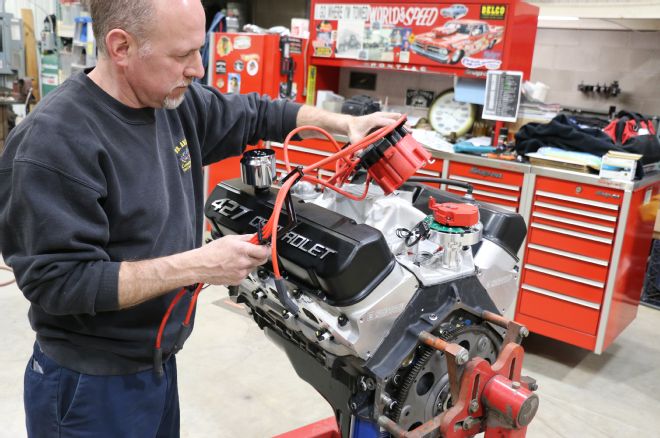
1 Mike Ardito begins transforming the appearance of a brand-new Chevrolet Performance ZZ427 crate motor into a well-used 1967 L88 Corvette engine. The contemporary HEI distributor included with the ZZ427 motor must be replaced with a vintage distributor.
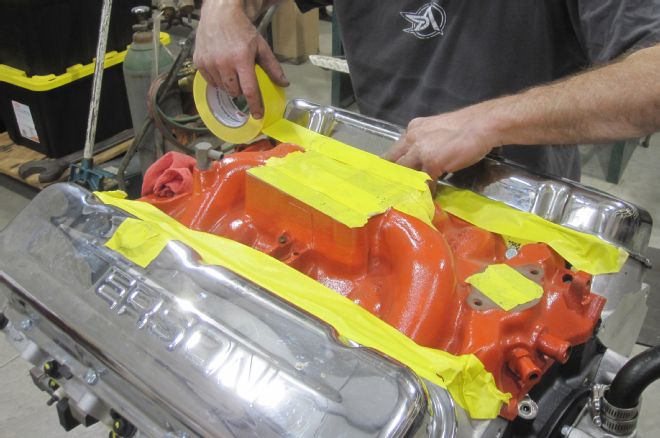
2 The ZZ427 crate motor valve covers will be replaced by 1967-style valve covers. Ardito removes the intake manifold in order to grind off the Chevrolet Bow Tie logos.
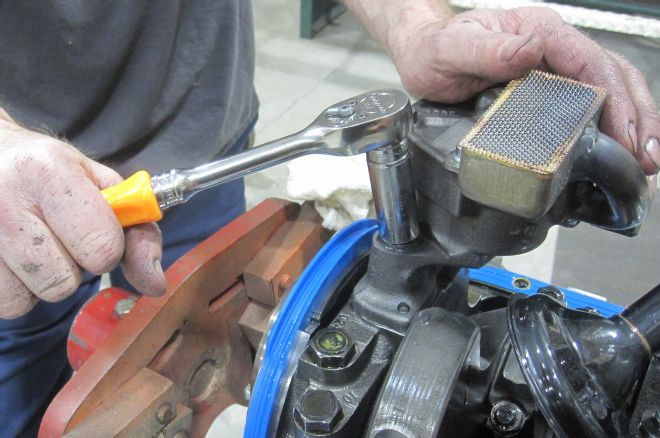
3 The oil pan supplied with the ZZ427 crate motor does not work for a 1967 Chevelle and must be replaced. Moroso supplied a Street/Strip oil pan (PN 20411) for our application. After removing the supplied pan and stock oil pump, Ardito installed a Moroso high-volume oil pump and pickup (PN22186).
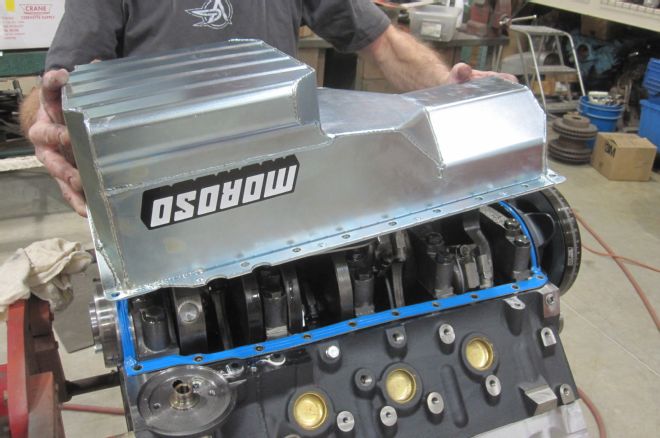
4 The Moroso Street/Strip 6-quart oil pan has a kickout to improve ground clearance. The pan sealed nicely and worked perfectly for the MaliBeater. The clear zinc finish on the Moroso pan looked too nice, though, so Ardito aged the pan to make it look about 40 years old.

5 Because he was about to hit the brand-new ZZ427 engine with a grinder, Ardito masked off all holes and mating surfaces. Shavings and filings can easily work their way into the engine if this step is ignored.
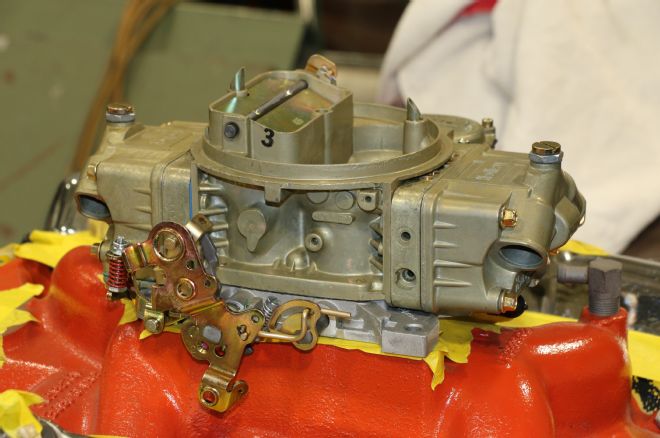
6 Chevrolet Performance supplies a Holley 770-cfm carburetor with the ZZ427 engine. However, since the 1967 L88 came with an 850-cfm Holley with vacuum secondaries, we bolted on this classic 850-cfm Holley carburetor with electric choke and vacuum secondaries (PN 0-80531).
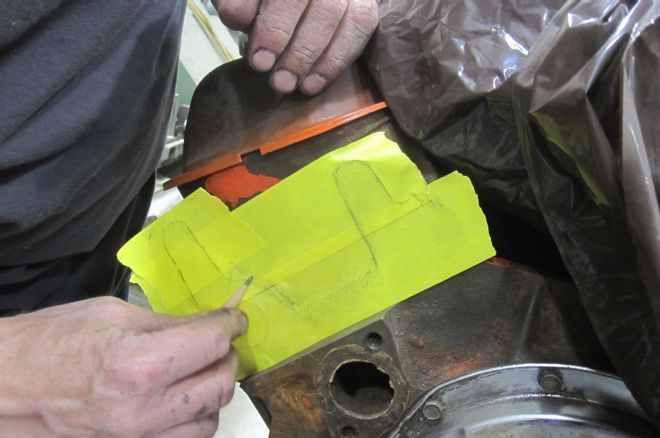
7 Ardito ran some masking tape on another big-block motor he had sitting in his shop, and used a pencil to create a template for the aluminum heads on the crate motor.
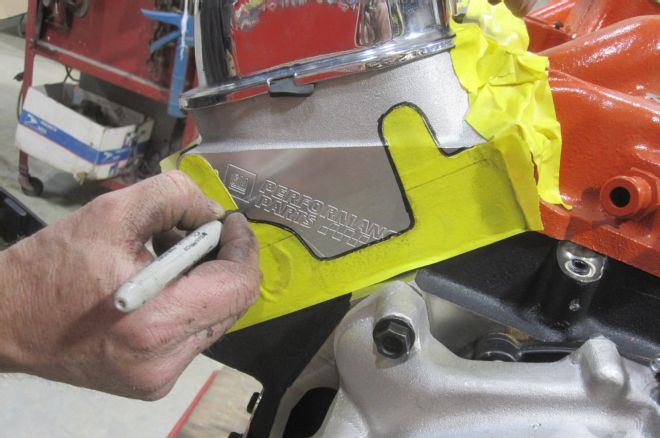
8 The template was transferred to the new motor, and a line was drawn on the cylinder head.
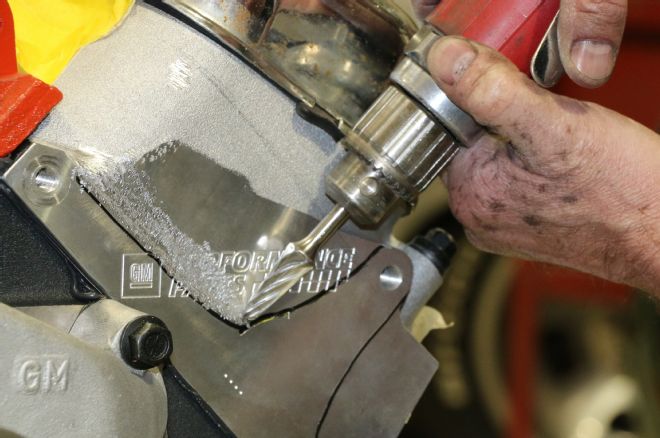
9 Ardito used a number of grinding stones and cutters to grind off the Chevrolet Performance logo and create a cast-type surface.
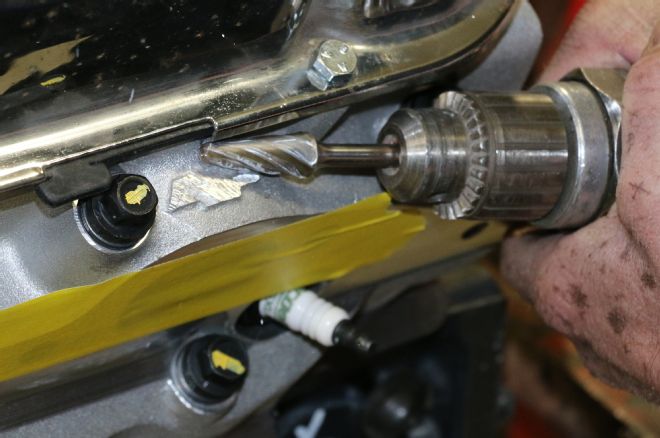
10 As much as we love the Chevrolet Bow Tie, it was not found on the 1967 L88 motor and had to be eliminated. Ardito again used a variety of bits and grinding stones to make them all disappear.
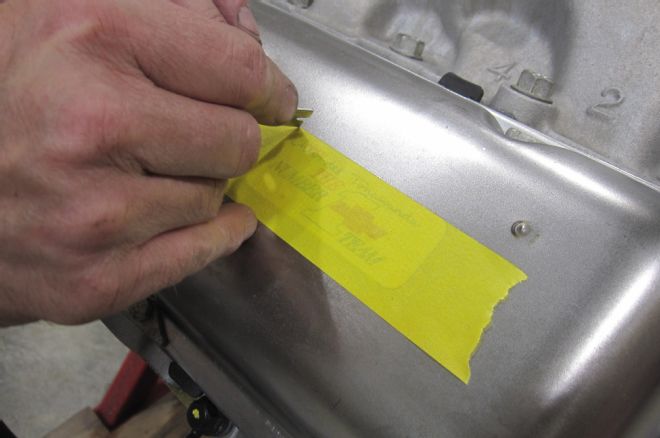
11 Having restored many midyear Corvettes, Ardito has become a student of Chevrolet assembly line practices. The Tonawanda engine sticker with a clear vinyl covering was slapped on the valve cover prior to paint. After paint, the clear covering was removed, making a way for slight corrosion to develop over time. Ardito re-creates that process using a masking tape covering over the Tonawanda engine sticker.
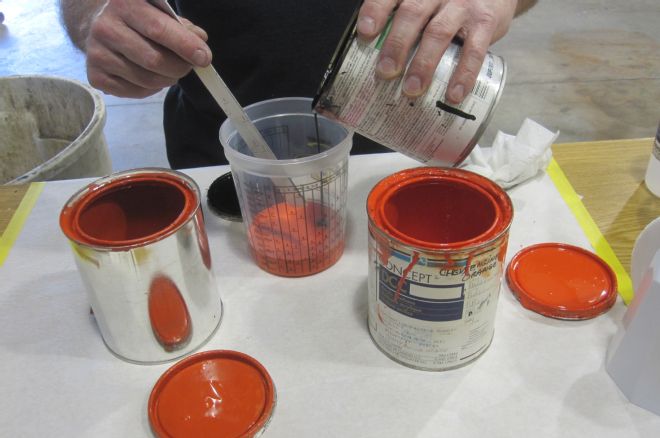
12 An old big-block Chevy in the signature Chevy Engine Orange paint typically turns darker with age. To replicate that look, Ardito has Chevy Engine Orange sitting on his shelf, aging. Some of that "vintage" engine paint was used on the MaliBeater motor.
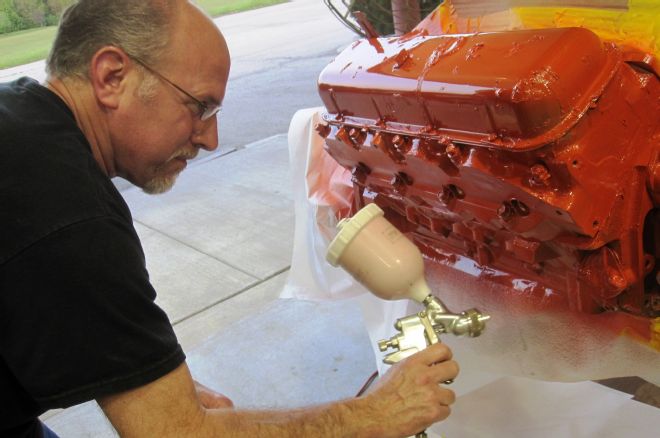
13 Prior to paint, Ardito artistically brushed on some homebrewed goop in the typical areas that rust. After the paint dried, he washed the exterior, exposing the bare metal areas that had been covered by the goop. He then applied a secret recipe blend that quickly rusted the bare spots.
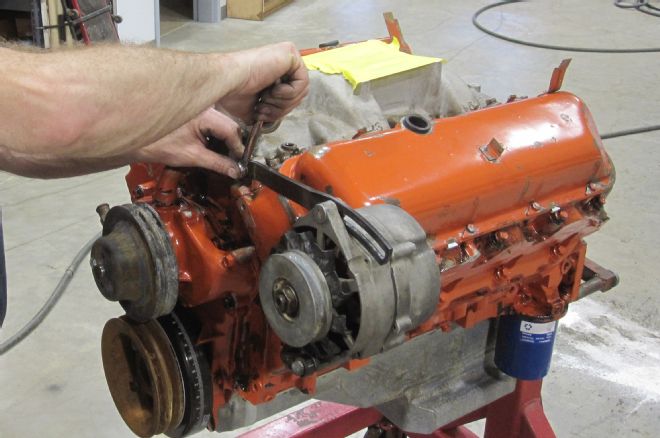
14 When the paint dried, Ardito installed brand-new but relicked deep-groove L88 pulleys. The generator from the MaliBeater's original 283 was put back into service.
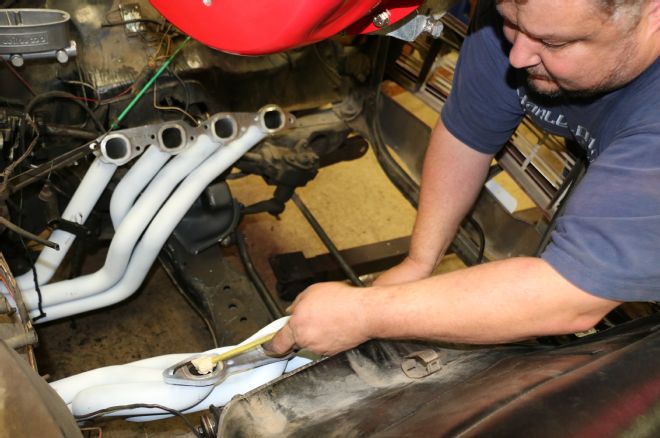
15 Chevrolet recommends a 2-inch primary tube header for the ZZ427 motor. Matt Renz of Midwest Muscle Cars is seen here installing Doug's Headers four-tube full-length headers (PN D322-R). These headers are available coated, but we opted for a raw finish and then lightly painted them with high-temp paint, anticipating that the headers would then rust slightly to match the rest of the engine's patina.
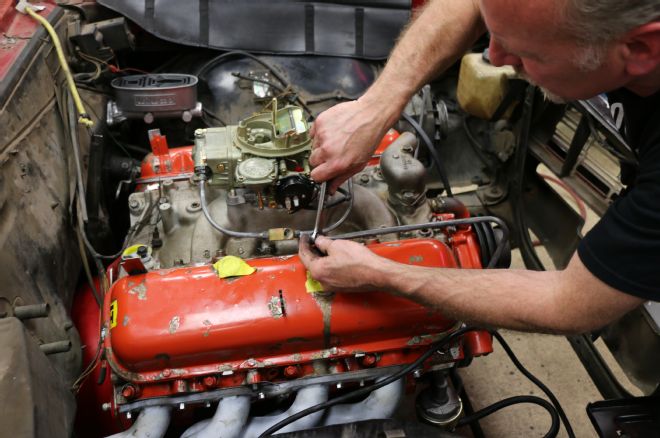
16 After the motor was in the car, Ardito installed the Holley 850 carburetor and L88-style fuel lines from Corvette Central. A used distributor with a PerTronix electronic ignition conversion was also put in, as were used wires.
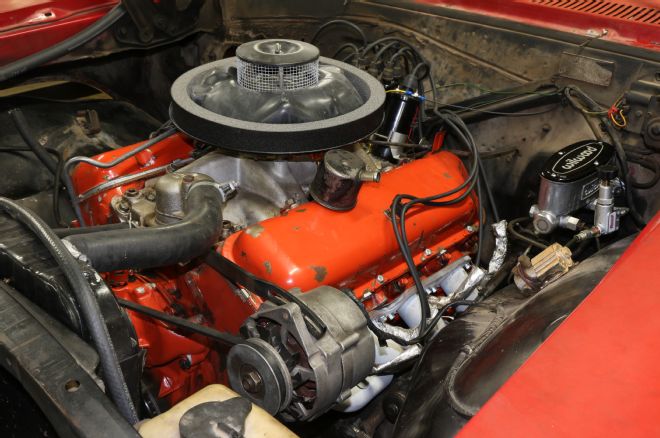
17 The L88 air cleaner was sourced from Corvette Central and nicely replicates the 1967 L88 unit. The breather is from my 440 Chrysler motor. The finished product is an engine that looks to have been installed in the early 1970s and nicely complements the honest 38-year-old engine compartment grime.